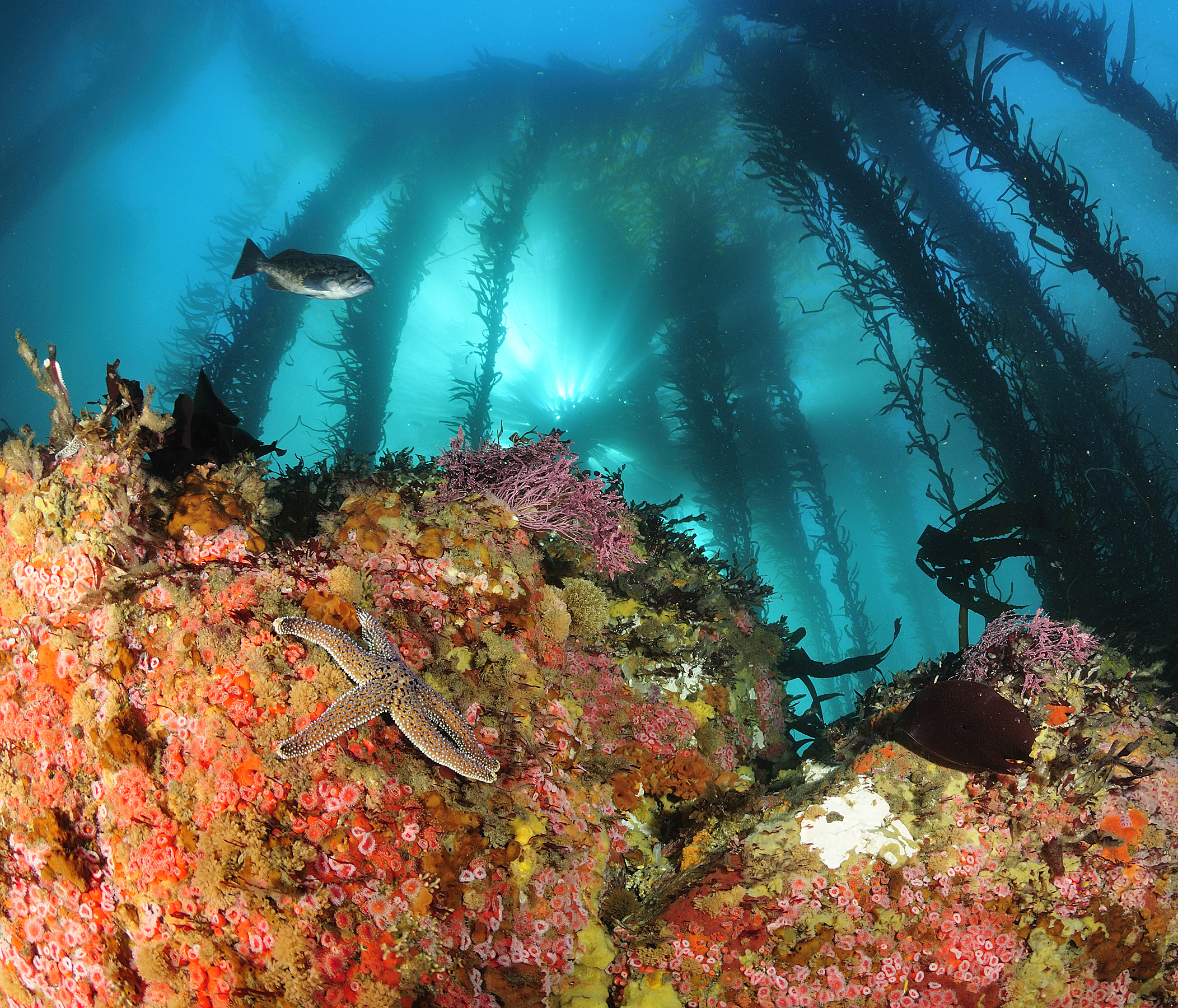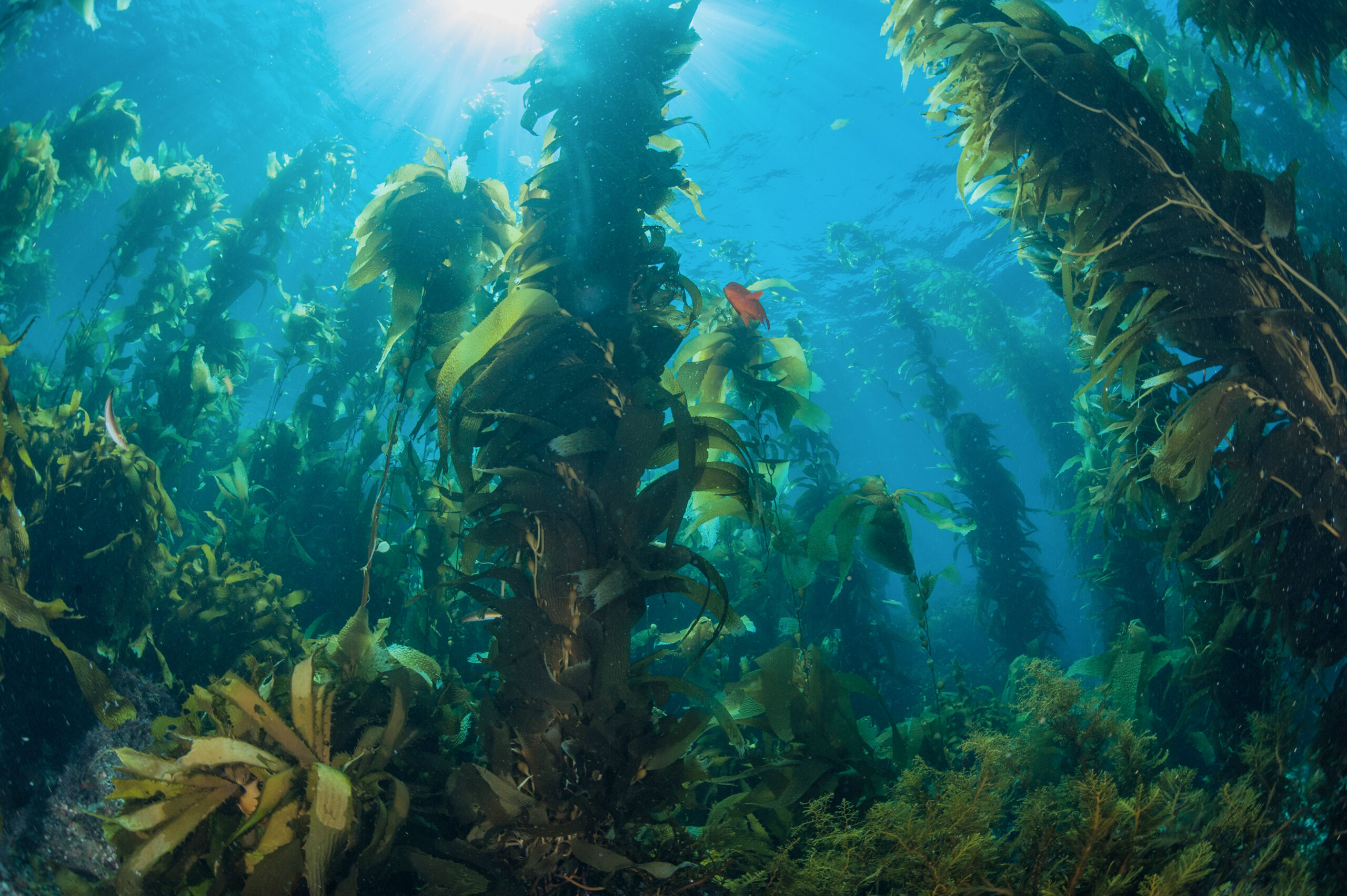Kelp’s Mighty Role in Our Ocean
Kelp forests are even more important than you think

Ocean fans tend to recognize the amazing value of kelp forests to our marine ecosystems. Whether appreciated while diving or snorkeling, or at an aquarium, the swaying amber fronds of a healthy kelp forest are a sure sign of abundant sea creatures. Kelp forests are the anchor of nearshore ocean wildlife communities across the U.S. West Coast and northeast, sustaining marine biodiversity by providing shelter, habitat and even food for an array of fish and invertebrates. The many varieties of kelp—a marine algae rather than a true plant—expand the habitat available for kelp forest residents by reaching upwards from the seafloor. Kelp species range from low-lying “bottom kelp” types or much taller species like California’s giant kelp, which can reach the surface from 80-foot depths or more. This third dimension helps make kelp forests among the richest habitats on Earth.
What’s less known are the risks kelp forests face from a changing ocean and the role they play as a bulwark against a host of ocean problems, including climate change. Kelp forests are key assets in the effort to control the effects of climate change and are likewise quite susceptible to these effects if not given a helping hand.

Preserving and sustaining a biologically rich ecosystem is a significant way kelp forests can help stem the tide of climate change effects. Diverse natural ecosystems are resilient ecosystems, hosting many different plants and animals that all perform unique roles along with abundant genetic diversity that maximizes the ecosystem’s chances of surviving future change. Studies show the positive role of healthy kelp forests in maintaining ecological balance and resilience, and illustrate the importance of such balance in the face of climate-driven changes.
Kelp forests also act to reduce the force of storm-driven tides and surges and act like a trash fence to help retain nearshore sand, preventing erosion. Every surfer can tell you how a nearby kelp forest can groom and smooth a choppy swell; they are noticing a small-scale effect of this larger calming effect large kelp forests can play. In addition, like other highly productive ecosystems such as mangroves and rain forests, kelp forests can absorb and hold carbon which might otherwise end up contributing to rising global temperatures. This is called carbon sequestration, and efforts to restore and enhance kelp and seagrass beds to store more “blue carbon” are increasingly seen as a tool to help counter the effects of a warming ocean and world. Carbon sequestration by kelp and seagrass is also being studied as a way to mitigate an ominous climate-driven effect called ocean acidification.